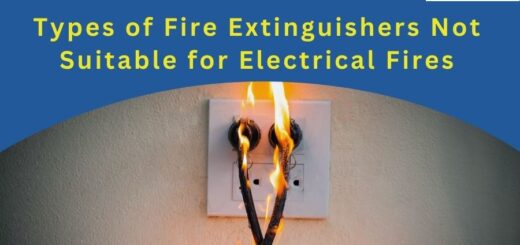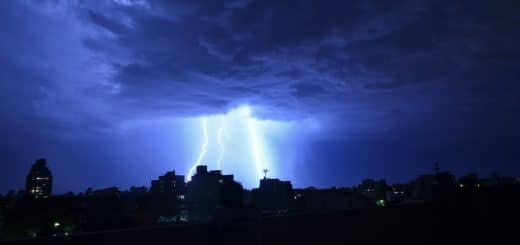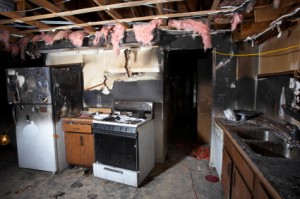How to Clean Up Soot After a Fire?
Summary: After a fire, it’s important to clean up soot quickly to protect your home and belongings. Discover easy and effective ways to remove soot from walls, ceilings, clothes, metal surfaces, wood, and more with our helpful guide.
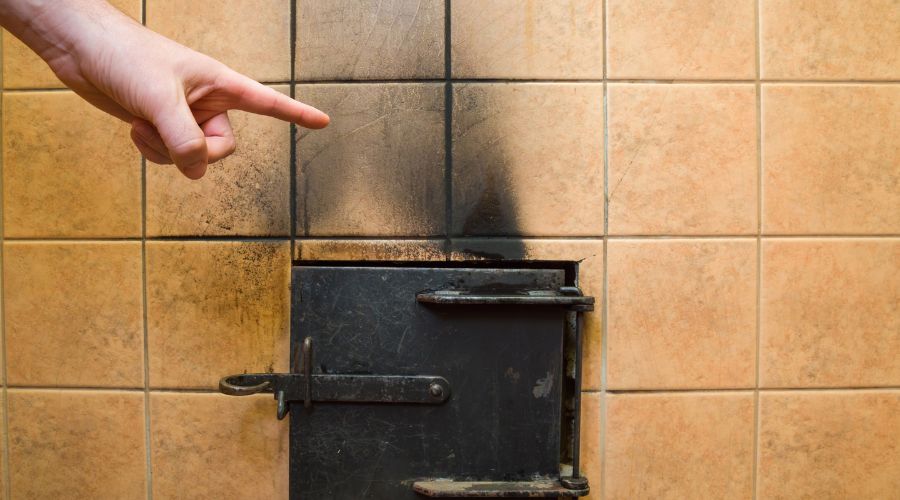
When your home is the site of a fire, there is a lot of serious damage that can be done.
The fire itself will cause your property and personal belongings to burn and become charred. As these materials are harmed by the flames, they produce toxic smoke, fumes, and soot. Smoke will form when synthetic materials burn up, and soot is created due to incomplete combustion.
The flames will work quickly, so it does not take too long for a fire to produce harmful byproducts. Because of how quickly fire and soot damage can occur, it is crucial that you call your local fire department for help right away.
Once the fire has been extinguished, you may feel relieved, and rightfully so. However, your property is not done being harmed. In fact, the secondary damage that can be created due to lingering smoke and soot is often more widespread than the initial damage done by the flames themselves.
If smoke and soot damage are not treated in a prompt manner, then the damage will likely become permanent. Knowing this, soot cleaning must be conducted right away.
Can Soot Be Cleaned?
The good news is that soot can be cleaned from a wide variety of surfaces and objects. However, it is very important for affected materials to be cleaned using the proper techniques and cleaning products. Improper cleaning of soot can make the damage worse or even permanent. It is also important to start cleaning soot damaged surfaces and materials as soon as possible after the fire is out or the soot can cause permanent damage.
Materials Needed to Clean Soot
Using the wrong materials and cleaning techniques makes soot damage worse. Getting the right materials will help you clean the soot more effectively. You should get the following materials to clean up soot:
- Dry-cleaning or chemical sponge, also called a soot sponge
- HEPA vacuum cleaner
- Commercial air scrubber
- High-alkali detergent or degreaser
- Cleaning solutions made from vinegar, rubbing alcohol, baking soda, or hydrogen peroxide
What is the Best Cleaner for Soot?
The best cleaner to use for soot depends on the type of fire and materials affected. Soot from a high-oxygen fire can typically be removed using a dry-cleaning or dry chemical sponge. You can use this type of sponge on porous materials like flooring, walls, and ceilings. Wet cleaning methods for soot from high-oxygen fires will smear the soot and make the damage worse. However, soot from low-oxygen fires is oily and is best cleaned using a wet sponge with a high-alkaline detergent.
A good rule of thumb is to use dry cleaning methods on porous materials like wood, carpeting, furniture, and drywall and wet cleaning methods on non-porous surfaces like tile and glass. You should try cleaning a small, hidden area first to ensure that your method is effective before cleaning the entire surface or object. If you are unsure of the best cleaning method to use, it may be best to consult a professional.
Step-by-Step Instructions for Cleaning Soot After Fire Damage
Once you have identified the areas affected by soot and gathered your materials, it is time to start the cleaning process. Keep in mind that the best soot cleaning method will differ depending on the type of surface or material affected. The following steps will help you effectively clean up soot in your home.
Protect Yourself
When your home has recently sustained fire and smoke damage, you need to be cautious, even with no flames present. Lingering smoke and soot are present and can be harmful, not only to your home, but to your health as well. Knowing this, wait first until it is safe to enter your home, then protect yourself before you begin the cleaning process.
- Avoid touching anything when you first enter the affected area to prevent spreading the soot.
- Wear long clothing that covers your limbs and protective gear including goggles, a mask, and rubber gloves. The goggles will keep smoke particles and other debris out of your eyes and the mask will prevent you from breathing in harmful elements. The gloves are important because the natural oils in your hand can worsen soot damage. With gloves, you can handle soot-damaged objects and surfaces without causing additional harm.
- Ventilate the affected area to dissipate smoke odors and minimize the amount of soot particles you are breathing in.
- Carefully remove debris from the space to make the soot easier to clean up.
If your property requires major soot cleaning, it is best to call a restoration professional that provides specialized soot cleaning services. Tackling a major soot cleanup job yourself may result in further damage and put you at risk of serious health effects from soot exposure.
Vacuum Loose Particles
Depending on the material and surface, you will need to use a different cleaning method to ensure effective work. Regardless of the type, the one thing you can do for any surface is start cleaning by vacuuming up loose soot particles. However, it is important to use not just any vacuum, but one that has a HEPA filter. This filter will effectively pick up the loose soot without redistributing it back into the air. You should also consider using a commercial air scrubber to trap soot particles floating in the air and deodorize the space.
How to Remove Soot from Walls
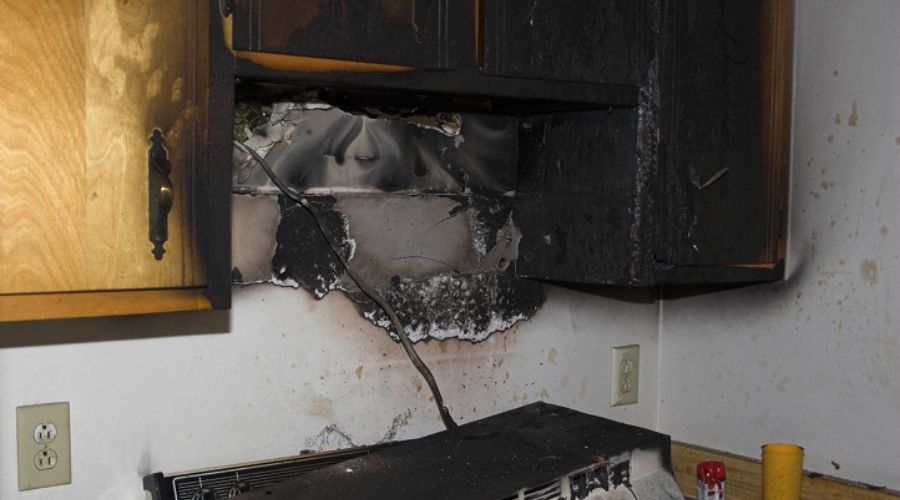
You can effectively clean soot from drywall by following these steps:
- Protect yourself: Always protect yourself by wearing long sleeves, a mask, gloves, and goggles to prevent soot from harming your skin and lungs.
- Ventilate the area: Make sure the room is ventilated by opening windows and turning on fans. This helps dissipate smoke odors and reduces the amount of soot you are breathing in. You should also turn off the HVAC system to avoid spreading smoke and soot.
- Cover or remove items: Small items should be removed from the area to make the cleaning easier. You can cover larger items like furniture and appliances.
- Cover the floor: Put down a floor cover such as newspaper or a sheet to prevent soot from building up on the floor.
- Vacuum: Using a HEPA filter vacuum, vacuum loose soot from the wall. You should hold the nozzle about half an inch away from the surface as touching the surface with the nozzle can smear the soot.
- Use dry-cleaning sponge: Drywall is a porous material and must be cleaned with a dry-cleaning sponge. Use the sponge to wipe away the soot with downward strokes. Scrubbing the wall will make the soot damage worse.
- Clean leftover stains: You can use a high-alkali solution such as dish soap and water to clean the leftover stains after the soot is removed.
- Rinse and dry: Rinse the walls to remove leftover detergent and pat dry the surface with a towel.
- Remove the floor cover: After the job is complete, remove and dispose of the floor cover.
When cleaning the residual stains, you can either use mild soap/detergent or a combination of tri-sodium phosphate and chlorine bleach. If you opt for the latter solution, use the following ratio as a guideline:
- 1 gallon warm water
- 1 cup chlorine bleach
- 4 to 6 tablespoons tri-sodium phosphate
When handling soot cleaning for walls, focus on one section at a time instead of handling the entire wall all at once. Use clean warm water to immediately rinse the sections down after thorough scrubbing.
How to Clean Soot from the Ceiling
You can clean soot from your ceiling by following the same steps outlined in the section above. If you have soot on your ceiling and walls, clean the ceiling first because the soot from the ceiling will fall and settle on the walls. You also need to wipe the soot from light fixtures and ceiling fans.
How to Get Soot Out of Carpet
Carpets are vulnerable to staining from soot, especially if they are light in color. You should never scrub carpeting affected by soot because this will push the soot further into the carpet fibers where it can cause damage. Instead, follow these steps to clean soot from your carpeting:
- Use a spoon to remove large pieces of soot. Do not apply pressure to the soot pieces or they will break up and penetrate deeper into the carpet fibers.
- Vacuum the carpet and baseboards with a HEPA vacuum to remove fine soot particles.
- Sprinkle baking soda over all soot stained areas of the carpet. Let it sit for an hour to absorb the soot and then vacuum the carpet. You may need to repeat this step a couple times before moving on.
- Blot residual stains using a white cloth soaked in a dry-cleaning, rubbing alcohol, or hydrogen peroxide solution. Never scrub the stain or you will spread the soot. Test the solution on an inconspicuous area of the carpet to make sure it does not affect the color or damage the carpet. Keep in mind that rubbing alcohol may damage certain types of carpet fibers and hydrogen peroxide should be diluted with three tablespoons of warm water and only used on light colored carpeting because of its bleaching effect.
- Rinse the treated areas with a cup of water to remove residual detergent. You can also blot the areas with a towel dampened with warm water. Make sure you dry the carpeting thoroughly to prevent mold growth.
How to Remove Soot from Brick
Brick surfaces in your home can be affected by soot as well. You can clean soot from brick surfaces by following these tips:
- Create a solution of white vinegar and water and apply it to the bricks to loosen the soot.
- Dip an old toothbrush in baking soda and scrub difficult spots.
- Rinse the brick with a bucket of warm water with a little bit of bleach added to sanitize the surface.
You may have to repeat this process multiple times to fully remove soot from brick surfaces.
How to Get Soot Off Clothes and Other Garments
The aforementioned solution made of warm water, bleach, and tri-sodium phosphate can also be used to clean clothes and other fabric garments. The tri-sodium phosphate is especially helpful in this situation because it can lessen odors. However, you can also use standard laundry detergent to clean soot-damaged clothes and fabrics in your washing machine. Just use cold water and add a teaspoon of vanilla extract after adding detergent.
How to Clean Soot from Metal
Soot can cause dark stains on metal surfaces and objects. By following these tips, you can effectively remove soot and stains from a range of metal surfaces:
- Unpainted metal: You can remove soot from unpainted metal objects and surfaces by spraying it with a hose. After spraying it, you can use a Brillo pad to scrub off remaining soot residue. Rinse the surface or object after cleaning and dry thoroughly to prevent rusting.
- Painted metal: Mix several drops of dish soap into hot water and use a scrubbing sponge dipped in this solution to scrub off the soot. Then spray the surface with a mixture of white vinegar and warm water to break up the residual soot spots. Use a nylon scrub brush to remove the remaining soot. Remove the remaining soap and vinegar with a damp rag and dry the surface.
- Aluminum: Start by sweeping or vacuuming loose soot from the surface, then wipe the surface with a dry-cleaning sponge. Then treat the surface with a commercial soot remover and rinse thoroughly.
- Stainless steel: Scrub the surface with a soft cloth dipped in vinegar until the soot is removed.
How to Clean Soot from Wood
Soot particles can penetrate wood surfaces and cause unsightly staining and damage. Apply an oven cleaner or a solution of Windex and ammonia mixed with water liberally to the wood surface. Then wipe the wood with a damp cloth to remove the cleaning solution and the soot. You should never use vinegar on wood surfaces because it can stain and damage the wood.
Seek Professional Help for Soot Cleaning

When your home has been damaged by a fire, immediate action is crucial for limiting the amount of harm done.
In addition to being affected by the flames, your home will likely have suffered some amount of smoke damage and soot damage, too. To prevent permanent damage, you need to address fire damage restoration needs immediately.
While there are ways to clean smoke and soot damage on your own, it is always in your best interest to seek help from a professional smoke damage and odor removal service.
Within such a service, professional technicians will clean the smoke and soot damage your home has suffered. Then, they will either restore or replace the affected materials. Professional cleaners have the tools, equipment, and expertise to clean soot damage in a safe and effective manner. There will be no need to worry about whether you have the proper cleaning products or are using the correct techniques.
Furthermore, when you call for fire damage restoration services, technicians will promptly respond and come to your home to begin their work. This allows them to begin the service right away, limiting the potential for permanent damage.










